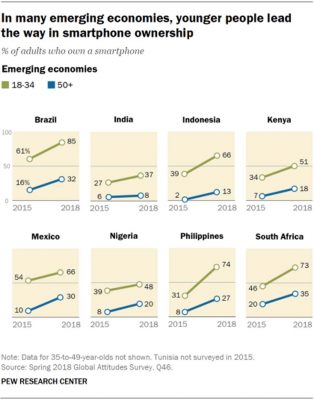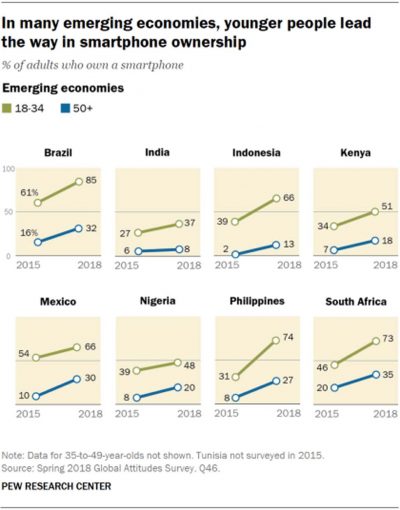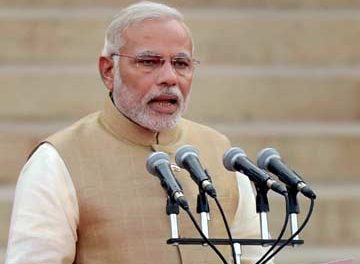By Kumar Balani
New York, NY – Mobile communication devices commonly known as cell phones have now become essential in day-to-day living. Among the roughly 7.7 billion people living on earth today, more than five billion or about two among every three of us have mobile devices, and over half of these are smart phones. The differences in features between these two types vary greatly depending on the source of information checked.
Leading the world of advanced countries among users of smart phones is South Korea with a 95 percent penetration among all age groups, followed closely by Israel and the Netherlands where 88 and 87 percent respectively, use them. In advanced countries, a median of 76 percent own smart phones, 17 percent have regular phones, and 7 percent have none.

The picture is different among emerging countries. South Africa and Brazil are the leaders in these types of nations often referred to as the developing world. About 60 percent each of South Africans and Brazilians have smart phones, but South Africans lead with 33 percent having other mobile devices versus Brazil’s 23 percent.
Overall, a median of 45 percent own smart phones, 33 percent have regular mobile phone, and 22 percent have no mobile phones in emerging economies. People of India, among all countries surveyed, have the least use of smart phones at 24 percent, with 40 percent using other devices and 36 percent having no mobile device at all.
Worldwide, Youth Take the Lead in Smart Phone Use
The Philippines stands out in one respect. Filipino youth who are 18 to 34 years of age are the second largest users of smart phones, with 74 percent, after Brazilians of this age group with an astounding 85 percent among emerging economies. In the overall Philippine market of all ages, 55 percent have smart phones, 22 percent use regular mobile devices, and 23 percent do not own any mobile device at all. This is a useful piece of information for mobile phone makers.
These and other interesting findings were obtained in a survey of people in 27 countries worldwide by the Pew Research Center in 2018-19 and released on February 5, 2019. This study also included other questions relating to digital connectivity including Internet use and membership in social media platforms
Smart phone ownership is also more widespread, in the 70 to 90 percent range, among residents of higher-income countries, such as those in North America and Europe. The higher the per-capita earnings, the larger the number of smart phone owners. There are however a few notable exceptions to this norm in other parts of the world, such as in Australia, Israel, and South Korea
Kumar (Kem) Balani has an AB Journalism degree from the University of the Philippines and an MA in Politics from New York University. He is founder and publisher of Biz India Online News since 2002. Go to www.BizIndia.net to read book reviews, features, news, opinion columns, and videos on business, entertainment, investing, law, sports, technology, and more.
This column first appeared in the Daily Tribune in the Philippines on Sunday, March 10, 2019. Read Kumar Balani’s columns in that newspaper: http://tribune.net.ph/index.php/author/kumar-balani







